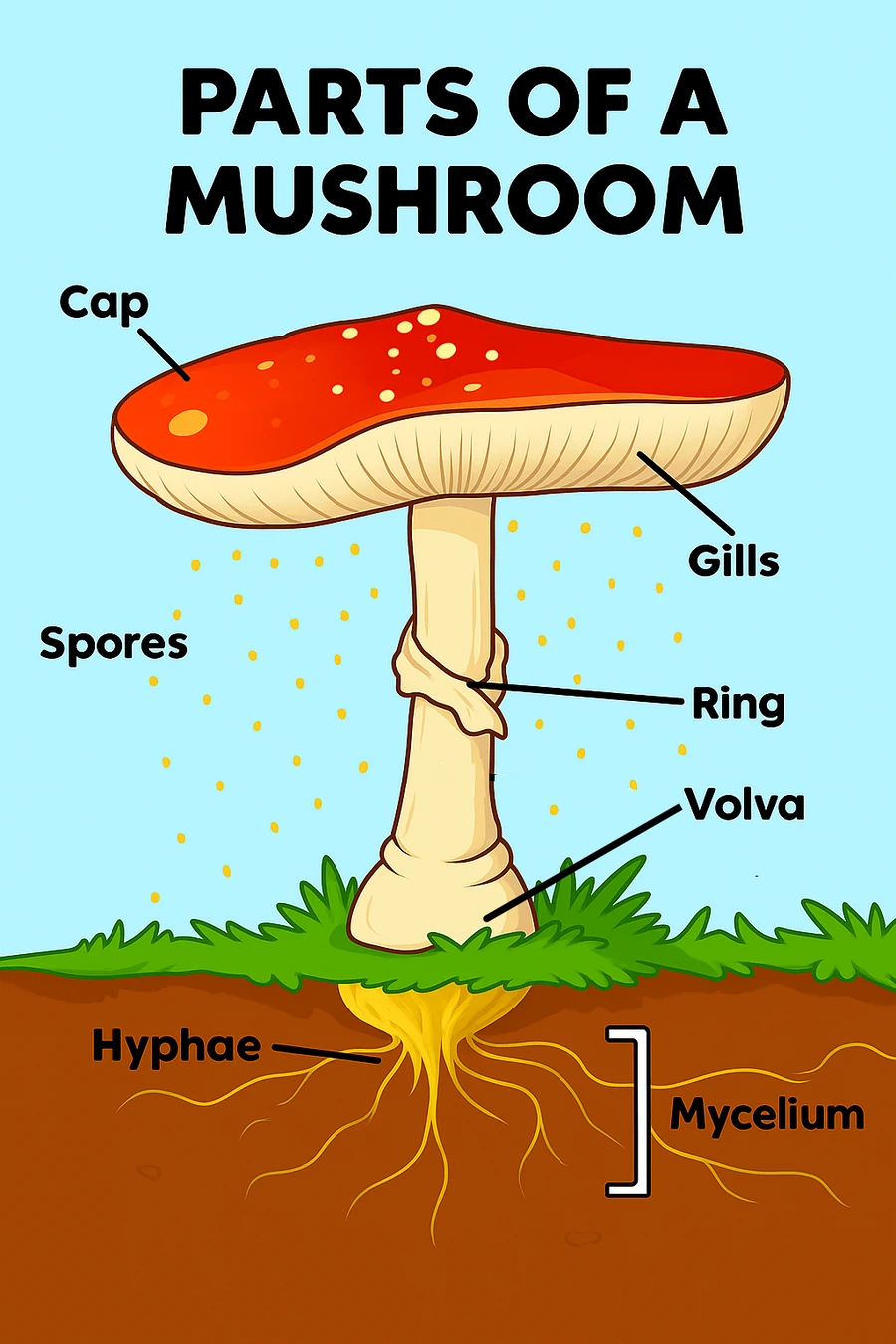What Are Fungi?

Fungi form one of the major kingdoms of life, distinct from both plants and animals. Although they were historically classified as plants due to their immobility and growth habits, fungi are fundamentally different in their biology and ecological role. One of the most notable differences is that fungi do not perform photosynthesis; they lack chlorophyll and instead acquire energy by breaking down organic material.
Fungi have evolved several strategies to obtain nutrients. The most common methods are decomposition, parasitism, and mutualism. Decomposer fungi play a vital role in ecosystems by breaking down dead plant material, recycling nutrients back into the environment. These fungi secrete enzymes that digest complex organic materials like cellulose and lignin, enabling other organisms to benefit from the simpler compounds left behind.
Some fungi live in symbiosis with plants through a relationship known as mycorrhiza. In this mutualistic association, the fungus colonises the plant roots and extends its network of fine filaments—called hyphae—into the surrounding soil. These thread-like structures absorb water and nutrients, greatly increasing the plant’s uptake capacity. The entire underground network formed by hyphae is known as the mycelium, which is the main body of the fungus. Often hidden from view, the mycelium can spread over large areas and persist for years.
Parasitic fungi, on the other hand, extract nutrients from living hosts, sometimes causing disease or death. While some parasites are relatively benign, others can be devastating to their host organisms. Fungi that begin as symbionts may also turn parasitic under certain conditions, blurring the lines between these relationships.
The part of a fungus that we commonly recognise—the mushroom—is just the fruiting body, produced by the mycelium. This above-ground structure is responsible for reproduction. At the top is the cap, which often has a dome or umbrella shape and shelters the underside of the mushroom. Beneath the cap are typically gills—thin, blade-like structures that produce microscopic spores. These spores are released into the air and serve as the primary means of fungal reproduction. However, not all mushrooms have gills; some species have pores, ridges, or spines instead, depending on how they are adapted to release their spores.
The mushroom's stalk, or stipe, supports the cap and elevates it to help spread the spores more effectively. Some mushrooms have a ring—a small collar-like band around the stalk. This is a remnant of a protective veil that once covered the gills or spore-bearing surface. At the base, you may find a volva, a cup-like structure that is also left behind from the mushroom’s early development. These features are not just structural; they are often used to identify different mushroom species.
Fungi reproduce both sexually and asexually, typically by releasing spores into the environment. When conditions are favourable—adequate moisture, warmth, and nutrients—the mycelium forms mushrooms to carry and distribute these spores, ensuring the survival and spread of the organism.
Fungi are incredibly diverse, with an estimated 2 to 5 million species, although only a fraction have been formally described. They are found in nearly every ecosystem on Earth, from deep sea vents to arid deserts. Beyond their ecological importance, fungi play significant roles in human life: they are essential in food production (like bread, cheese, and beer), medicine (such as antibiotics like penicillin), and various biotechnological processes.
Despite their benefits, some fungi can be harmful. Many wild mushrooms are toxic, and distinguishing edible species from poisonous ones requires expertise. Some contain potent toxins that can cause gastrointestinal distress, organ failure, or even death.
In short, fungi are a fascinating and essential group of organisms that bridge the gap between the familiar and the mysterious. Whether decomposing a fallen tree, supporting a forest’s root system, or contributing to scientific innovation, fungi are all around us—shaping life in ways we are only beginning to understand.
Although efforts have been made to ensure accuracy on this website, the information may contain errors and omissions. Therefore, all content provided is for educational and informational purposes only and should not be relied upon or used as a basis for consuming any plants or mushrooms.